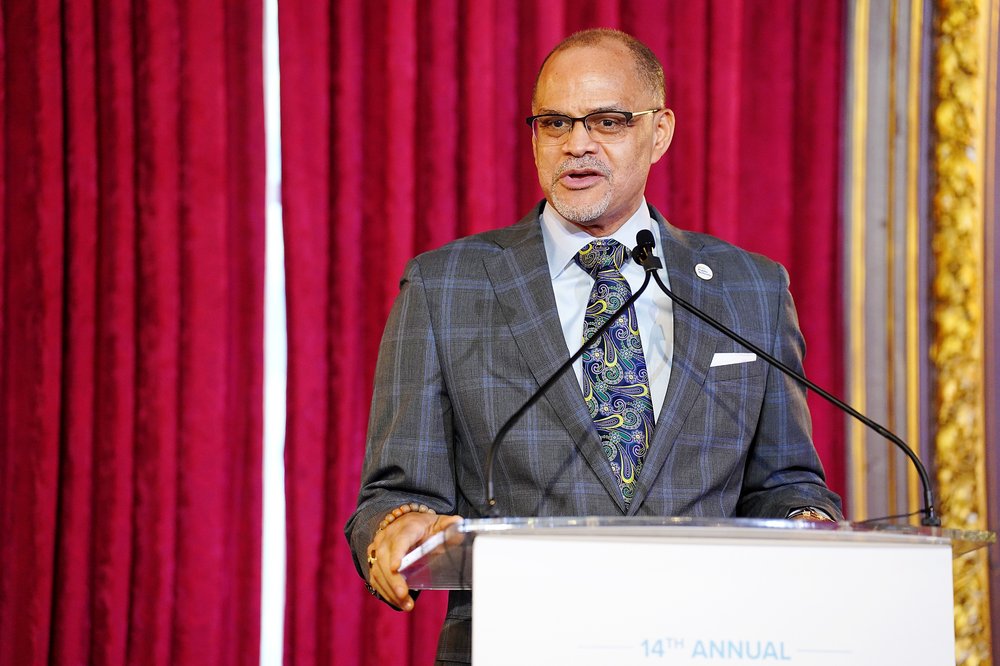NYC's new literacy curriculum criticized as uninteresting, rigid
Oct. 4, 2023, 6:02 a.m.
Some teachers and parents say a major overhaul of literacy education for students is off to a shaky start.

Just a month into the Adams administration's latest efforts to radically overhaul literacy instruction in New York City’s schools, some teachers and parents report the transition to a new curriculum is off to a shaky start.
“It is not differentiated, it is not culturally responsive and not interesting,” Martina Meijer, a teacher at a District 22 elementary school in Brooklyn, said at a Panel for Educational Policy meeting last Thursday.
Multiple teachers told Gothamist the most widely used new curriculum – called HMH Into Reading – feels rigid and dry, and fails to highlight enough authors and characters of color.
Several teachers also said they have not received nearly the amount of training they were promised. “There’s been really limited training so far,” said Jasmine, a teacher in Brooklyn’s District 20 who asked that her last name not be used because she was not authorized to speak to the press.
“I’m open to trying new things,” she added. “But not being able to center the voices of students and not having the freedom to choose which books I have in the classroom is not something I’m willing to compromise on.”
The criticism comes as New York City embarks on a massive transformation of how to teach reading, part of a national reckoning with low literacy rates. It marks a departure from how many of the city's public schools taught reading for a decade, and is part of a movement to align instruction with research into how students truly learn to read, also known as “the science of reading.”
Studies show students are best taught reading through direct instruction in letter sounds and combinations along with an emphasis on vocabulary and comprehension.
But for years many city schools used “whole language” and “balanced literacy’” approaches, which critics said glossed over phonics while often encouraging students to use ineffective strategies like guessing at words.
The most recently available standardized test scores show that about half of third through eighth grade students in New York state are not proficient readers. The numbers are even worse for Black and Latino students, who are respectively 64% and 63% nonproficient in reading.
City officials said the three new curricula available to schools – HMH Into Reading, Wit and Wisdom, and Imagine Learning EL – will lift up student literacy rates by providing direct, explicit instruction in the essential building blocks of reading.
The HMH curriculum includes instruction in phonemic awareness, phonics, fluency, vocabulary, comprehension, writing, language and knowledge building. It also includes a Spanish version that has made it appealing to schools with dual language programs or large numbers of Spanish-speaking students.
Superintendents selected which of the three options should be used in their school districts. Half of them had to adopt the new curricula at the start of the academic year in September. The rest must do so by next fall.
HMH is being used at more than 300 schools in the city, said HMH communications manager Katie Marshall. Education department officials said 15 of the city's school districts have switched to one of the new literacy curricula, and 13 of them are using HMH.
Schools Chancellor David Banks said last spring that all three curricula are “research-backed and science-based,” and promised robust training to help teachers with implementation.
“We’re putting together as much as we can to make sure that you feel supported and you have information at your fingertips,” said Deputy Schools Chancellor Carolyne Quintana at a forum hosted by the advocacy group Educators 4 Excellence in August.
She said teachers new to the three curricula have received a dozen hours or more of professional development already, and there will be more coaching available through the school year. The training sessions are a mix of virtual webinars, in-person workshops and coaching.
The United Federation of Teachers has also offered training. Union officials said almost 1,000 instructors attended a two-week training on the HMH curriculum over the summer.
Some teachers have praised the curriculum. Teacher April Rose – whose school in Queens had already made the shift to Into Reading – said at the August forum that “it’s really working,” includes “a wealth of knowledge” and “rich and authentic texts.”
But many educators and families remain skeptical.
Nearly 150 parents at Brooklyn School of Inquiry attended a meeting with the district superintendent last Thursday evening to air their concerns over the HMH curriculum.
“Our kids hate this curriculum,” said parent Danielle Tarantolo. “They’re bored.”
Parent Alina Lewis said the lessons are dry and appear to rely on relatively short passages instead of full books. “I have found myself in an Orwellian nightmare arguing that my kid and all kids should be allowed to read and discuss whole class books in school,” she said.
According to HMH spokesperson Marshall, the majority of the texts students are reading are full length, while “[s]ome text excerpts are included … to provide exposure to a variety of genres and to further build knowledge.”
Education department officials said educators can teach more full texts and novels as they see fit, and supplement the curriculum with other resources, like the city’s Hidden Voices materials, which seek to elevate the experiences of underrepresented communities.
“It's the role of the teacher to adjust instruction for students based on their needs/ability,” said education department spokesperson Nicole Brownstein. “If a child has advanced beyond reading passages, teachers are making adjustments to accommodate them.”
Mayor Eric Adams has said some bumps are to be expected with the rollout. “Is it going to be perfect? No,” he said at the press conference announcing the changes last spring. “But damn it, we’re going to try.”
With test scores low, NYC schools turn to new approach for reading instruction